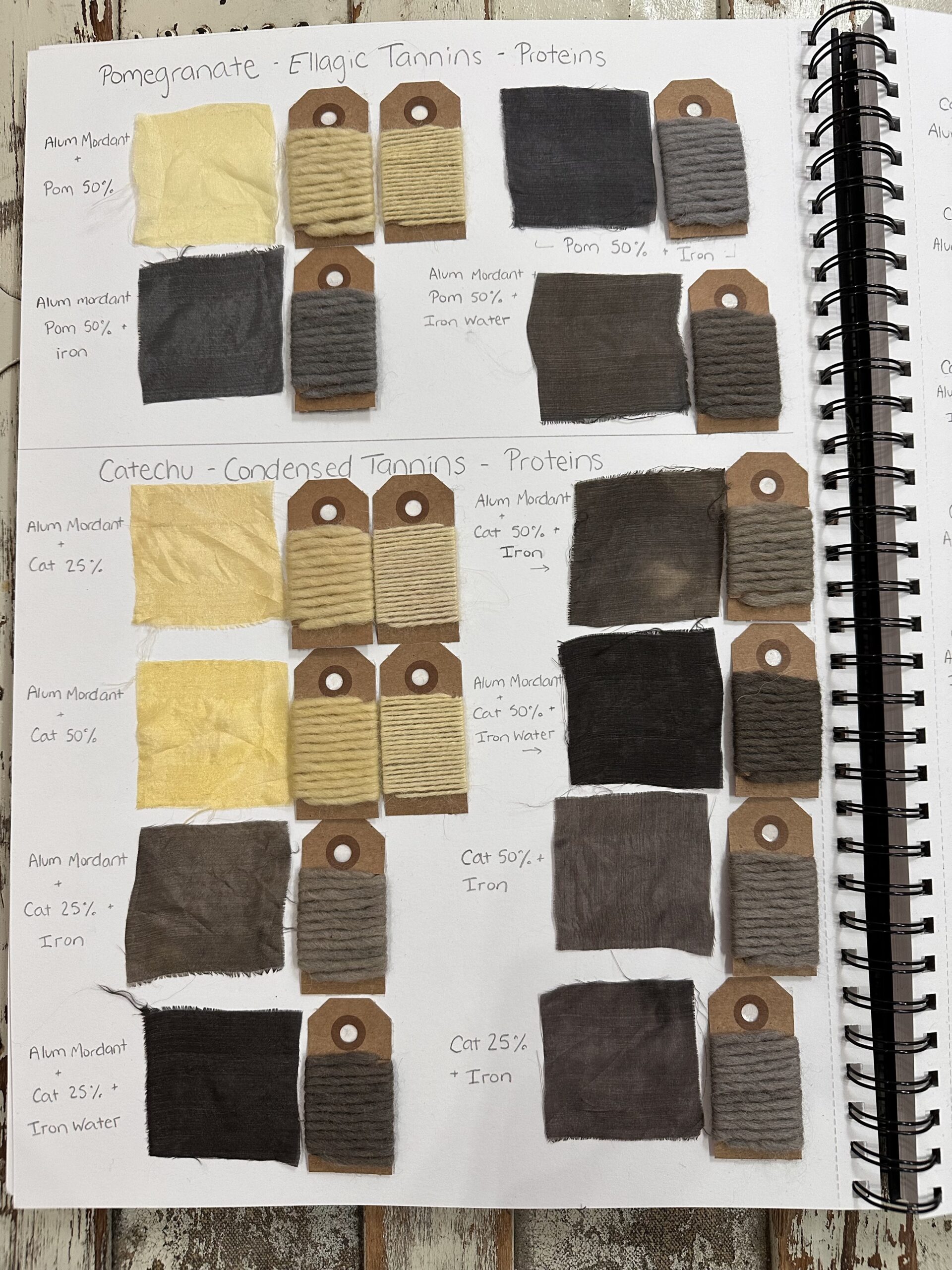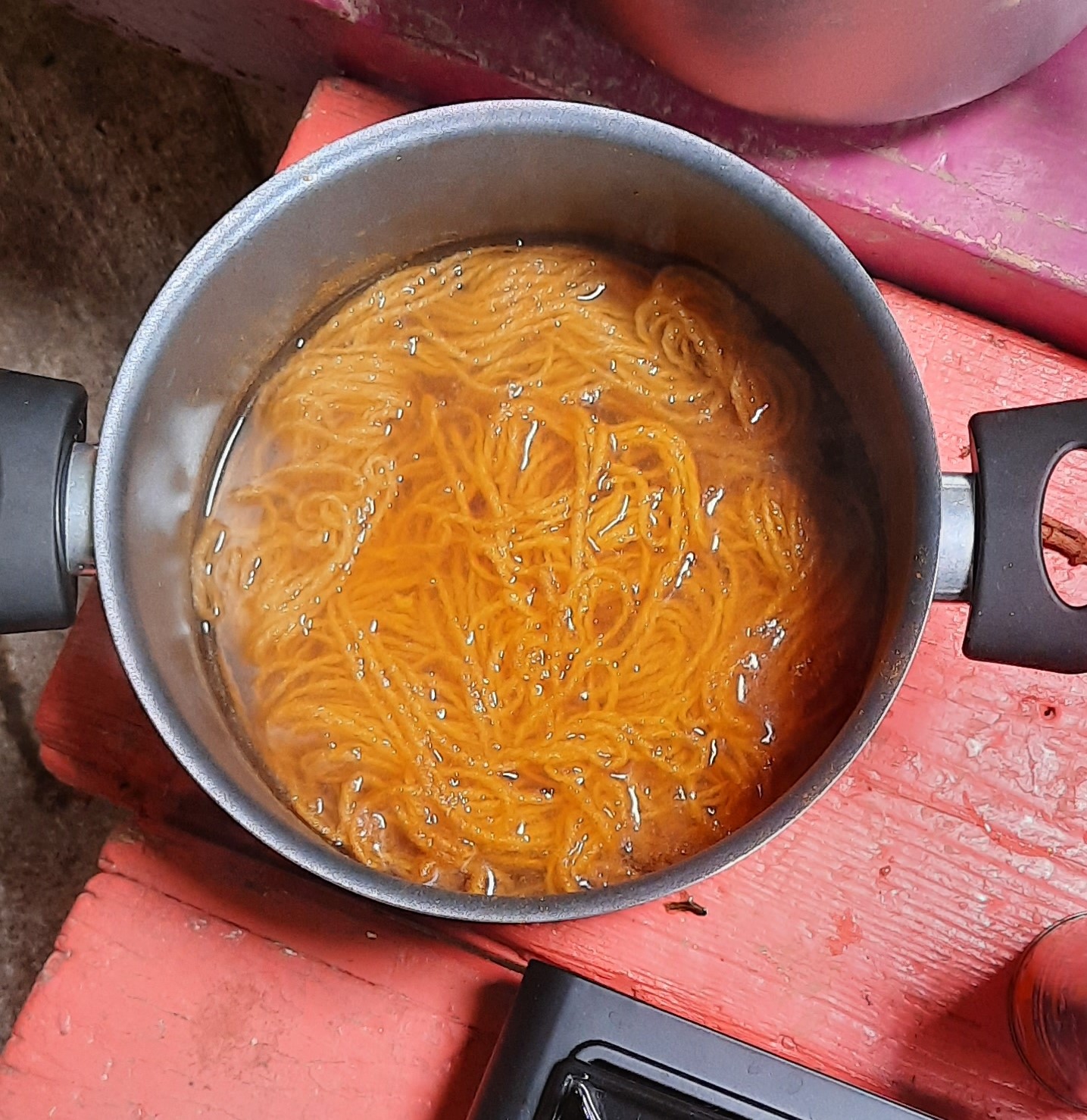
At a lovely August weekend in Clara, Orlaith managed to demystify natural dyeing for me to a large extent.
I got really excited!
This was something new that I hadn’t tried yet, and the thought of dyeing my own yarn and then making it into something I can use, or can gift to someone, has always been an ambition. What had scared me was the concept of using mordants which I didn’t understand, and hadn’t really taken the time to deep-dive into this arcane knowledge. So far, I had only really thought of dyeing fabric with a view to garb, and that had felt too much of a tall order for natural dyeing.
So seeing Orlaith filling the gazebo at the Clara Scout’s den with several gas camp cooker stoves and multiple pots was intriguing and her lovely collection of glass pots with every kind of powder and leaf felt truly swamp witchtastic!


I had brought my own contribution.
During my soap-making expeditions, I had found that natural dyes worked quite well for what I wanted to do, and in my stash I had a packet of marigold that I hadn’t tried yet. So I really wanted to see what it would do. There are a lot of natural dyes on the yellow range and I was curious to see what sort of yellow it would turn out to be especially since the powder in the packet wasn’t particularly awe-inspiring.
The yarn I used had been previously soaked in an alum mordant bath and then went into the pot with regular tap water, to cook. One spoonful of the marigold powder didn’t look like it was enough, so I added another. Even so, I was worried that 2 spoonfuls wouldn’t make much of an impact.
I was wrong.


After nearly an hour’s soak, the yarn came out a very strong…. well…. marigold colour. It was far more intense than I expected, especially given how feeble the powder had looked when I first added it to the water.
It did not take long for the yarn to start taking the colour and at the end of the cook, it was a very satisfyingly successful dye.


The initial dry, in order to be able to take it home, did not seem to affect the colour. I had tried other colours previously where the yarn lost almost all colour during the drying process, but the marigold stayed vivid.
Even after I washed it, the colour didn’t lose much of it’s strength. I was very pleased with the result. Most natural dyes are fugitive, so it will remain to be seen as to how long the colour will last, especially if regularly exposed to light. But as an inital dye attempt with this particular plant, it was incredibly satisfying and easy.
Melisende Fitzwalter


Leave a Reply